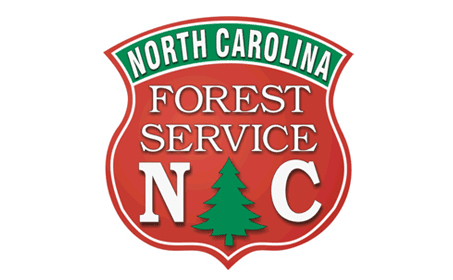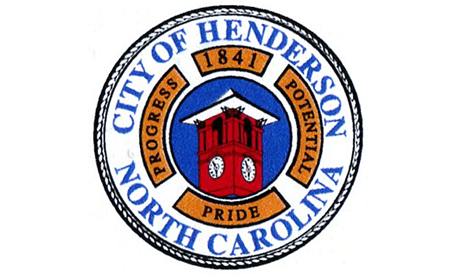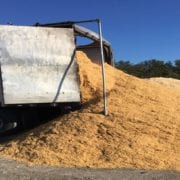Be safe when cleaning up debris from Hurricane Matthew
/by WIZS StaffAs North Carolina residents begin to clean up in the wake of Hurricane Matthew, the N.C. Forest Service is encouraging them to remember to be careful when burning debris.
The current situation has many roads closed due to flooding and other issues. This, combined with emergency response resources being heavily engaged in other areas, including more than 100 N.C. Forest Service personnel, means getting help to deal with an escaped burn may be difficult.
“While it’s hard to believe with as much rain has Hurricane Mathew brought to the state, grass and twigs can, and will, dry out quickly and become fuel for a fire,” said Agriculture Commissioner Steve Troxler. “It’s also important to remember that it is illegal to burn anything other than yard debris.”
There are many factors to consider before burning debris. The N.C. Forest Service encourages residents considering debris burning to contact their local county forest ranger. The ranger can offer technical advice and explain the best options to help maximize the safety to people, property and the forest.
The Forest Service urges people to follow these tips to protect property and prevent wildfires:
- Consider alternatives to burning. Some types of debris, such as leaves, grass and stubble, may be of more value if they are not burned, but used for mulch instead.
- Check local burning laws. Some communities allow burning only during specified hours. Others forbid it entirely.
- Make sure you have a valid permit. You can obtain a burning permit at any Forest Service office or authorized permitting agent, or online at ncforestservice.gov.
- Keep an eye on the weather. Don’t burn on dry, windy days.
- Local fire officials can recommend a safe way to burn debris. Don’t pile vegetation on the ground. Instead, place it in a cleared area and contained in a screened receptacle, away from overhead branches and wires.
- Household trash should be hauled away to a trash or recycling station.
- Be sure you are fully prepared before burning. To control the fire, you will need a hose, bucket, steel rake and a shovel for tossing dirt on the fire. Keep a phone nearby, too.
- Never use kerosene, gasoline, diesel fuel or other flammable liquids to speed debris burning.
- Stay with your fire until it is completely out.
- These same tips hold true for campfires and barbeques as well. Douse burning charcoal briquettes or campfires thoroughly with water. When soaked; stir the coals and soak them again. Be sure they are out cold and carefully feel to be sure they are extinguished. Never dump hot ashes or coals into a wooded area.
- Burning agricultural residue and forestland litter: In addition to the rules above, a fire line should be plowed around the area to be burned. Large fields should be separated into small plots for burning one at a time. Before doing any burning in a wooded area, contact your county ranger, who will weigh all factors, explain them and offer technical advice.
Studies have shown that taking these and other measures can reduce the possibility of wildfires.
For more information on ways you can prevent wildfires and loss of property, log onto ncforestservice.gov.
An update on Sign Regulations from the City of Henderson
/by WIZS StaffBullet Points Relative to Article 400 Sign Regulations
1). What’s the purpose of the sign ordinance?
The purpose of the Sign Regulation of Article 400 is to minimize any detrimental effects of signs on adjacent land uses, and to insure that permitted signs do not become a public nuisance or hazard because of their number, location, size, lighting, structural conditions, or other reasons.
2). What are the different types of signs?
Business Signs: A sign which directs attention to a business, industry, commodity, service, or entertainment conducted, sold, or offered on the premises where the sign is located. (401.2)
Identification Signs: A sign which carries no advertising message and is limited to the following information concerning the premises: (401.3)
- The name of the building or buildings
- The address of the building or buildings
- The name of the business firm or firms or institution occupying the premises
- The nature of business or activity conducted on the premises
- Area or development name signs
Informational Signs: Informational Signs: A sign which carries no commercial message and which intended to informs the public of upcoming community events being sponsored or conducted by governmental, quasi-governmental or non-profit entities within the City. These events may include high school ballgames, charity drives, scout activities. (401.5)
Incidental Signs: A sign carrying no advertising message, but giving information for the convenience and necessity of the public such as “entrance”, “exit”, “no admittance”, “telephone”, “parking”, etc. (401.4)
General Advertising / Billboards: A sign which directs attention to a business, industry, commodity, service, or entertainment not conducted, sold, or offered on the premises where the sign is located. (401.1)
Temporary Signs is a classification listed in section 402.
(See Section 402 for entire list)
Temporary Signs are any portable advertisement displayed for the duration of the event or sale (not to exceed 30 days) that directs or attracts public attention to a specific event, product sold or service offered by the beneficiary of such display (Informational Signs and Political/Election Campaign Signs are not considered temporary signage). The square footage including all temporary signs shall not exceed 35 square feet per lot. In addition, temporary signs shall not be affixed to pylon signs, light poles (whether public or private), utility poles or fences. (402.15)
3). How much signage can I place on my property / business?
A business, that is not located in a Unified Business Development, is allowed 75 square feet of total signage area on each lot or parcel. However, if the business abuts a publicly maintained right of way (street) for more than 200 feet then the business is allowed 3 square feet of sign area up to maximum of 250 square feet. (406.2)
For Unified Business Development sign allowance see 406.2, 406.10.1, 406.10.2, 406.10.3, and 406B
4). How many signs can I place on my property?
In no case shall total number of all the types of signs provided for in Section 404 exceed six (6) per lot (404.4); except, in B1, OI, and I-1 districts shall have no more than three (3) signs. (406.2).
5). Can I place other business signs on my property?
Informational signs (see 401.5 for definition) shall be allowed in any commercial (“B”) or industrial (“I”) district, without regard to whether the sign is on-premise or off- premise, providing that the signage allowable for business signage on that property would not be exceeded if the sign had been erected as a business sign and providing that the sign is under 36 sq. ft. in area, is setback at least 5 feet from the right-of-way, is fully landscaped, and is not higher than 10 feet in height.
6). Can I place business signs at my residents?
Off premise advertisement is not allowed in residential districts except RA with a special use permit. (310A 24.1)
7). What signs are prohibited?
Signs that have, beacons, rotating disks, and other devices which resemble traffic signals, traffic signs, emergency vehicle flashing lights, or which can be misconstrued by the traveling public as being an official governmental sign or emergency warning, or which by their distracting nature create a hazard to motorists. (405.1)
Illuminated signs casting glare into a roadway to an extent that it creates a hazard to motorist are prohibited in all districts. (405.2)
Signs within a street right of way or in a public place or on public property except in compliance with the provisions of the City Code unless a zoning permit is granted for the same. (405.3) for additional information on signs in the right of way see 10-33-3 in the City Code
8). What signs are exempted from sign regulation?
“For Sale or For Rent signs related to real estate not exceeding two (2) square feet (404.2.3)
Church or public bulletin boards not to exceeding twelve (12) square feet (404.2.4)
On premise signs advertising agriculture products not exceeding ten (10) square feet (404.5)
Residential signs identifying name of neighbor / subdivision at the front of the main entrance not exceeding six (6) square feet (404.2.6)
Sign erected by Local, State, or Federal government for traffic control and other governmental purpose (404.2.7)
Wall / window signs not exceeding six (6) square feet in the Central Business District / B1 (407.2)
9). How long can Political sign remain after an election?
Every political sign, poster, bill or placard placed in the city limits (and not located on private property with the permission of the property owner) shall be removed within fifteen (15) days following the final determination of the results of the election to which the same is applicable. Said removal shall be the personal responsibility of the candidate (in whose support the political sign, poster, bill or placard is solicited) if said candidate resides in Vance County, North Carolina; if said candidates does not reside in Vance County, North Carolina, then said responsibility shall be that of the campaign manager in Vance County of said respective candidate. (City Code 10-33.2)
10). What is the process to obtain a sign permit?
Fill out an application from the Development Services Department, attached a site plan showing location of sign with dimension in relation with property lines. Attached drawing or photo or rendering of proposed sign with dimensions.
11). What is the cost to obtain a sign permit?
SIGN FEES(403.5)
| SIZE OF SIGN | FEE |
| 0-50 square feet | $25 |
| 51-100 square feet | $50 |
| 101-200 square feet | $75 |
| 200(+) square feet | $100 |
Vance-Granville awarded $150k for public safety training
/by WIZS StaffThe Cannon Foundation Board of Directors recently approved a $150,000 grant to the Vance-Granville Community College Endowment Fund to renovate a 3,200-square-foot space on the college’s Main Campus for an Emergency Simulation Lab.
The new lab will enable law enforcement and emergency services departments in Vance, Granville, Franklin and Warren counties to train and certify their current and future public safety workers using a realistic scenario-based curriculum in a controlled environment.
The grant will be used, along with funds from the Connect NC bond (approved by North Carolina voters earlier this year), to complete the final phase of Building 10, which opened in August on the main campus in Vance County. The building houses classrooms, labs and faculty for VGCC’s law enforcement, fire/rescue and emergency medical services education and training programs.
“We are very pleased to receive this grant, because it will allow Vance-Granville to further enhance our vital partnerships with the local agencies that protect and serve our communities,” said Dr. Stelfanie Williams, president of VGCC. “We’re excited about the possibilities that this new lab will provide for us to serve students and our public safety partners.”
The Cannon Foundation, based in Concord, N.C., is part of the philanthropic legacy of Charles A. Cannon, an industrialist and humanitarian who was president and chairman of Cannon Mills Company for more than half a century.
“Our region is fortunate that VGCC has hands-on, real-life emergency simulation equipment to train students and professionals in public safety careers,” said Kaine Riggan, VGCC’s grants and government relations coordinator. “The simulation lab will give us a new facility in which to provide training for first responders throughout our four counties to be prepared for emergency scenarios, which saves lives.”
VGCC’s PRISim ShootBack system, for instance, fires plastic ammunition up to 110 miles per hour, teaching life-saving defense techniques and methods for using less-than-lethal force, when appropriate.
The college is currently seeking a $15,000 sponsor for a new EMS simulation mannequin that can, among other things, simulate stroke symptoms, ensuring that students are more prepared to recognize and call the stroke code into the ER, where saving even a minute can save a life.
VGCC is now starting the design phase of the renovation project, which will complete the overhaul of the 16,000-square-foot building, a former commercial structure that was purchased by the college in 2010.
Hurricane Matthew inflicts significant damage on N.C. agriculture
/by WIZS StaffThe flood water hasn’t receded yet, but initial reports show that North Carolina’s agricultural industries took a beating from Hurricane Matthew. State ag officials do not have damage estimates, but the 48 counties affected by the storm are some of North Carolina’s largest ag counties.
“The eastern counties represent 71 percent of the state’s total farm cash receipts,” said Agriculture Commissioner Steve Troxler. “While lots of crops were harvested before the storm, many crops, such as soybeans, sweet potatoes, peanuts and cotton, were just in the early stages of harvest.”
The 48 counties accounted for more than $9.6 billion of the $13.5 billion in farm cash receipts in 2014.
In addition to crops, Eastern North Carolina also has a large poultry and swine population. Initial reports show that 1.9 million birds, mostly broiler chickens, have died as a result of the storm. However, considering the extent of the flooding, State Veterinarian Doug Meckes expects that number to rise. North Carolina growers raise more than 800 million birds each year.
Veterinary officials and the department’s Environmental Programs Division staff are working with growers on proper disposal of the birds. Troxler requested and was granted a $6 million grant from FEMA to purchase carbon material to compost the carcasses and mitigate the potential public health risk. Composting is the preferred method of disposal as it reduces leeching of farm waste, reduces pest and disease issues and prevents odor issues. The finished compost can then be used for agricultural purposes. Farms have begun requesting carbon materials and deliveries began today.
The hog industry did a good job preparing for this event and taking proactive measures to reduce populations or move hogs to higher ground. As of press time, there are limited reports of swine deaths and no known hog lagoon breaches. NCDA&CS is not the regulatory agency that oversees hog lagoons.
“The industry learned a lot since Hurricane Floyd in 1999,” said Troxler. Many hog farms in the 100-year flood plain were closed through a swine buyout program overseen by our Soil and Water Conservation Division.”
Farmers needing assistance can call the Ag Emergency Hotline at 1-866-645-9403. The department is operating the hotline 24 hours a day, seven days a week.
Loose Leaf Collection to Begin October 24th for Henderson Residents
/by WIZS StaffLoose leaf collection will begin the week of October 24th, 2016, and will end Mid-January. This involves the use of a vacuum machine and trucks therefore it is essential that leaves be free of rocks, trash and limbs so that the equipment is not damaged. You may continue to bag the leaves or place in a container; however, it is not required until the loose leaf pickup season is over.
- LOOSE LEAVES – All leaves must be raked behind the curb (not into storm drains, ditches or gutters on the street)
- BAGGED LEAVES – All leaves must be in CLEAR plastic bags and weigh less than 50 lbs. per bag. Bags must be left at the curb. Do not put in street or gutters and ditches
Make certain that no leaves are left on top of your water meter. Leaves will generally be picked up on a two or three week rotation; however, this is dependent on weather conditions and leaf accumulation. If you have any questions, contact the Public Services Department at 252-431-6115 or 252-431-6118. Also, please keep in mind after January 17, 2017, if leaves are not bagged there will be a $75.00 charge.





